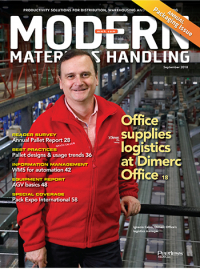Automation increases data accuracy and productivity
Manufacturer gains traceability, responsiveness and efficiency after implementing new software.
Established in Japan in 1929, Akebono manufactures brake friction materials and foundation brake assemblies serving leading OEMs, Tier I brake suppliers and the automotive aftermarket.
The company employs more than 9,000 people in 30 wholly owned or affiliated facilities worldwide.
To improve data consistency and real-time responsiveness while managing multiple customers and complex systems, the company’s Thailand facility implemented new software to improve performance and cut costs.
The company’s inventory, manufacturing and shipping processes are a complex system with many steps. Previously, much of the work, record keeping and forecasting was manual.
“We didn’t have a single version of the truth,” says Nattapan Kitprayoon, general manager of production and production control.
“We were getting different numbers from different departments, and it was difficult for management to accept or approve which number was more accurate and reliable. Data accuracy, reliability and integrity were questionable elements.”
The company also experienced challenges with response times to customers, product traceability, inventory management and month-end production downtime.
“We needed a concise and consistent system. We needed to trust our data and be more efficient,” Kitprayoon says. “We realized that converting our manual systems to an automated system could give us that.”
Integrated into Akebono Thailand’s enterprise solution, the software (QAD Automation Solutions) automated, unified and simplified processes while improving effectiveness and efficiency. The software provider created an implementation plan including workshops, training sessions, tuning of data collection transactions and labels, as well as support.
The company increased inventory control with real-time updates of customer needs. It streamlined inbound processes by scanning pallets and boxes into stock while verifying the supplier advanced shipping notice (ASN). Maximized production replenishment helped meet the demand for components based on real-time schedule priorities.
The company improved accuracy and control over the production order pick/issue process with a single scan of the work order. More accurate outbound processes include dynamic electronic dispatching to the warehouse, matching customer pick requirements.
Kitprayoon notes a decrease of month-end close from six to three days and daily savings of three man-hours.
“We can now determine if a product or product line will be profitable, and how much profit we’re making per product,” Kitprayoon says. “Our focus is better aimed at moving forward with the most profitable products.”

Article Topics
Columns News & Resources
New resource center for weighing and dimensioning Protective packaging roundup MODEX C-Suite Q&A: Troy Donnelly, Senior VP of Sales, Marketing, and Application, DMW&H When Just-in-Time Just Doesn’t Work Recycling coastline plastic into premium reusable packaging Fresh food, anyone? RPCs protect in the supply chain Why Isn’t Your Loading Dock Connected to Your Supply Chain? More ColumnsLatest in Materials Handling
Registration open for Pack Expo International 2024 Walmart chooses Swisslog AS/RS and software for third milk processing facility NetLogistik partners with Vuzix subsidiary Moviynt to offer mobility solutions for warehouses Materials Handling Robotics: The new world of heterogeneous robotic integration BSLBATT is looking for new distributors and resellers worldwide Lucas Watson appointed CSO for Körber’s Parcel Logistics business in North America Hyster recognizes Dealers of Distinction for 2023 More Materials HandlingAbout the Author
Subscribe to Materials Handling Magazine

Find out what the world's most innovative companies are doing to improve productivity in their plants and distribution centers.
Start your FREE subscription today.
April 2024 Modern Materials Handling

Latest Resources












